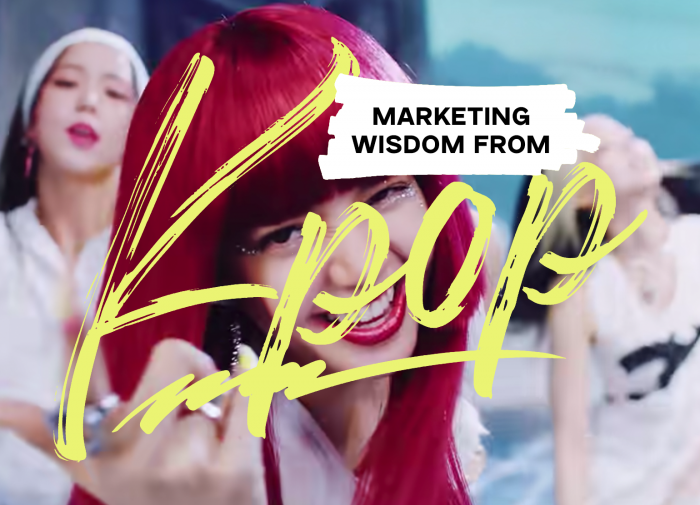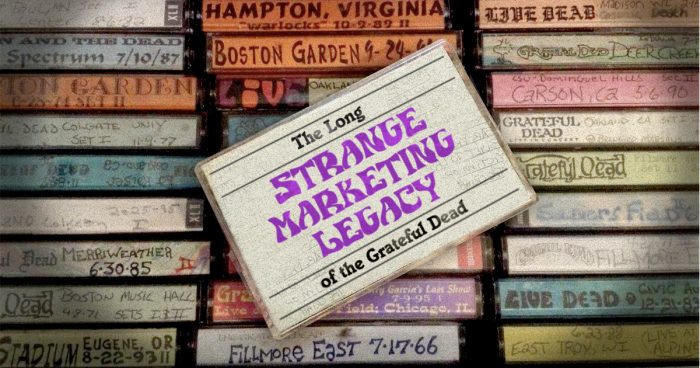Omnichannel marketing may seem familiar in broad strokes, but the details are constantly changing. And although “omni” is the Latin word for “all,” omnichannel marketing doesn’t mean you have to be everywhere. Rather, it’s a brand marketing strategy in which every point of contact enhances the experience of another for the consumer—the whole becomes more powerful than the sum of its parts. It makes for easier customer journeys, higher sales conversions, and a frictionless process that keeps your company in the audience’s mind beyond a single click or sale.
As channels and audiences naturally shift—coupled with 2020’s pandemic-driven rearrangement of, well, everything—there is new urgency for brands to better engage with their customers across this ever-expanding landscape of devices, outlets, and interactions. Assuming that there are more channels than most company’s finite budgets can effectively target, omnichannel marketing creates a cohesive and continuous user experience—at least when it’s done right.
Most brands understand the importance of creating experiences—whether in-person or digital—but the execution of those experiences varies widely. According to Total Retail’s 2020 Top 100 Omnichannel Retailers Report, companies who fared the best during the pandemic were those who adapted omnichannel strategies that prioritized understanding their audiences and meeting them where they already were in order to make long-term connections.
This isn’t advice to proliferate subpar content across every platform, but to direct your audience to the great content you already have in the places that are both most relevant to them and most beneficial to you. This looks different for every company—brands targeting Gen Z might take their chances with TikTok, while B2B marketers might promote a Clubhouse room. Ultimately, there is no single answer or shortcut. But with so many different companies doing distinct versions of omnichannel marketing, it’s easy to find lessons suited to your brand or business.
Businesses mastering the art of omnichannel
The brands doing the best omnichannel work are not just ticking channels off the list, but finding new ways to have a conversation. Consumers want seamless experiences and brands want to increase their sales and views, so offering smooth connections across channels and easily funneling viewers to those channels is one of the peak benefits of omnichannel marketing. With consistent messaging, brands can offer audiences one cohesive experience that solves for their current needs most effectively.
It’s important for 21st century brands to be relevant in the face of unpredictability, and omnichannel approaches offer that relevance across numerous channels. Banks like Chase and Bank of America, for example, now offer the ability to deposit checks, pay bills, or make appointments in an efficient way on their mobile apps.
While multichannel marketing reaches the consumer in a few different places, those places aren’t always complementary. Those different channels simply exist, sometimes totally independently. Omnichannel marketing, on the other hand, provides one connected experience. Furthermore, it gives companies the flexibility to quickly respond to changing consumer habits.
Different companies have implemented omnichannel marketing in different ways. But during the pandemic, all of the most successful brands were focused on gaining the loyalty and trust of audiences, even if they weren’t making purchases with them.
Many consumers tightened their budgets, and these brands understood that their audiences had different priorities in 2020. But this didn’t mean falling off the radar. By keeping the potential consumer engaged, even when they weren’t ready to purchase, the relationship remained close, so that consumers were always only one click away from a sale.
As we emerge into an era of renewed consumer spending, the brands who made deposits to cultivate relationships in 2020 are in the best position to make withdrawals in 2021. By understanding their consumers and consistently tailoring their content to reach them, some standout brands have mastered the art of omnichannel marketing. Whether you work at a small company or a big brand, there’s a lot that brands can learn about how innovative omnichannel strategies can activate and excite their target audiences.
Glossier
Glossier is a master at providing immersive experiences that nurture relationships. The brand is defined by changing the perception of beauty into something inclusive and personal—a perception that celebrates rather than shames the consumer. Its store experience is based on product discovery, with heavily branded locations designed to be intimate from start to finish.
Even during the pandemic—Glossier was one of the first major stores to announce temporarily closing their stores—founder Emily Weiss insisted that the store’s brick and mortar locations were only a small part of the company’s strategy. “Since day one, we’ve been a digital-first company, and even in ‘normal’ times, the vast majority of our sales happen online,” she said. “That doesn’t diminish the role of retail; it elevates it. As shopping for beauty online becomes the norm—and this period is undoubtedly accelerating that trend—retail gets to be about so much more than just procurement. It’s about human connection.”
Glossier’s focus on connection has long since been about connecting with customers in a genuine way. Instead of talking down to its customers, the giant brand was born from Weiss’s online blog Into The Gloss, which prioritized content its audience could relate to. That approach is mirrored now in Glossier’s use of “normal” people in their ads, rather than inaccessible models and celebrities. Across every channel, Glossier wants to prove that it’s like a confidant and best friend, rather than an intimidating brand.
Nike
“Just Do It” is more than just a slogan—Nike encourages its consumers to “Just Do It” in their daily lives. With its various apps—including NikePlus for rewards spenders, Nike Training Club for athletes (or aspiring ones!), and SNKRS for loyal sneakerheads—the company ushers every kind of consumer towards a catered shopping experience. By rewarding users for engaging with brand content and making purchases with incentives like exclusive content, Nike is giving its audience reasons to just do it (read: buy and use their products) more than ever.
Research has proven that the reward-seeking method works when users have something to work towards, much like any other goal. Total Retail’s report showed that nearly 80 percent of loyalty program members can earn points and redeem them across multiple transaction channels for the retailers that the report evaluated, up 5 percent from last year. That stat demonstrates the value of flexible loyalty programs that help generate loyalty and nurture relationships. Nike was able to reap the benefits of this system even after its stores closed in 2020.
Nike also uses data collected from its various apps to find out who to target. For specific campaigns, the company uses demographic data to see who is engaging with its products the most and create content specifically targeted to them—using casting, location, and collaborations to resonate with specific profiles.
And like Glossier, Nike knows how to create an immersive experience. The brand’s giant storefront in downtown Manhattan is complete with a mini basketball court, soccer area, and running simulations. While these features are not directly sales-oriented, they make the overall experience one-of-a-kind.
Target
Loyalty can also be nurtured outside of specific membership programs. Brands of all kinds use social media, newsletters, or targeted campaigns to build a following that is obsessed not just with the product, but the brand identity and story. Brands which have found success often nurture the habits of their specific consumer base.
Target is adept at focusing on discovery and trusting that sales will come, rather than trying to force them. The company partnered with Pinterest to integrate the Pinterest Lens into Target’s app, so customers who see an item they like could snap a photo and find similar items available at the store, and this strategy helped Target boost its sales by almost 10 percent.
Virgin Atlantic
While Target found success in a partnership with a social media platform, Virgin Atlantic stepped up its audience communication by engaging on different platforms.
Virgin created social media campaigns to encourage and incentivize travel lovers—particularly those who are already Virgin customers—to post about their past and future vacations. In effect, the brand associated itself with a longing for travel, and it created a positive feedback loop of validation and communication.
As people began traveling again, Virgin also promoted a smartphone app to help support “a frictionless customer experience for permitted trips, with a digital ‘one-stop shop’ to collect, store and verify Covid-19 health credentials.” The brand’s responsive approach keeps it top-of mind as the most flexible and frictionless service.
Jeremy Boudinet of Customer Think noted that Virgin Atlantic doesn’t want to just convert customers—it wants to form relationships. “Virgin Atlantic goes beyond the sale,” he wrote. “Their customer experience is just beginning at the point of sale. For them, it’s about being there all the way.” By encouraging customers to share their travel experiences, they create a community and conversation that resonates with their audience emotionally and gives them the feeling of participation.
How anyone can implement an omnichannel strategy
Omnichannel marketing can be transformative if done well, integrating brands into the lives and thoughts of their target audience. When channels are connected seamlessly, offering multiple points of contact and encouraging potential customers to become loyalists, brands can produce consistent engagement and high sales conversions. But any disjointed approach just adds to the friction that no customer wants, especially at this moment.
Because this marketing approach can seem overwhelming, companies have to invest in the channels that speak most to their brand and their audience. Clint Fontanella, a manager at Hubspot, believes that technological upgrades will continue to make it easier for all kinds of companies to connect with their audiences. “There’s no doubt in my mind that future changes (in technology) will make it possible for even the smallest of companies to engage directly with customers—no matter where they are, what they’re doing, or what device they’re using,” he said.
So it’s not about being on “all” the channels, but making your audience feel like you are—because you’re on all the ones that are relevant to them.




